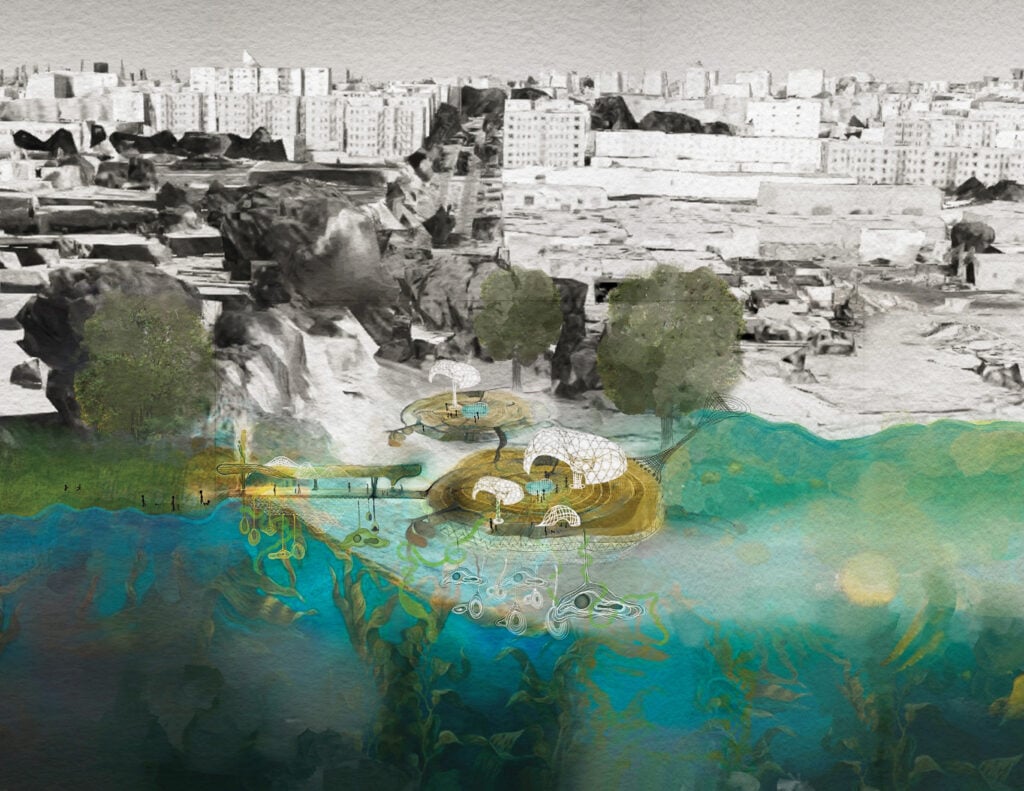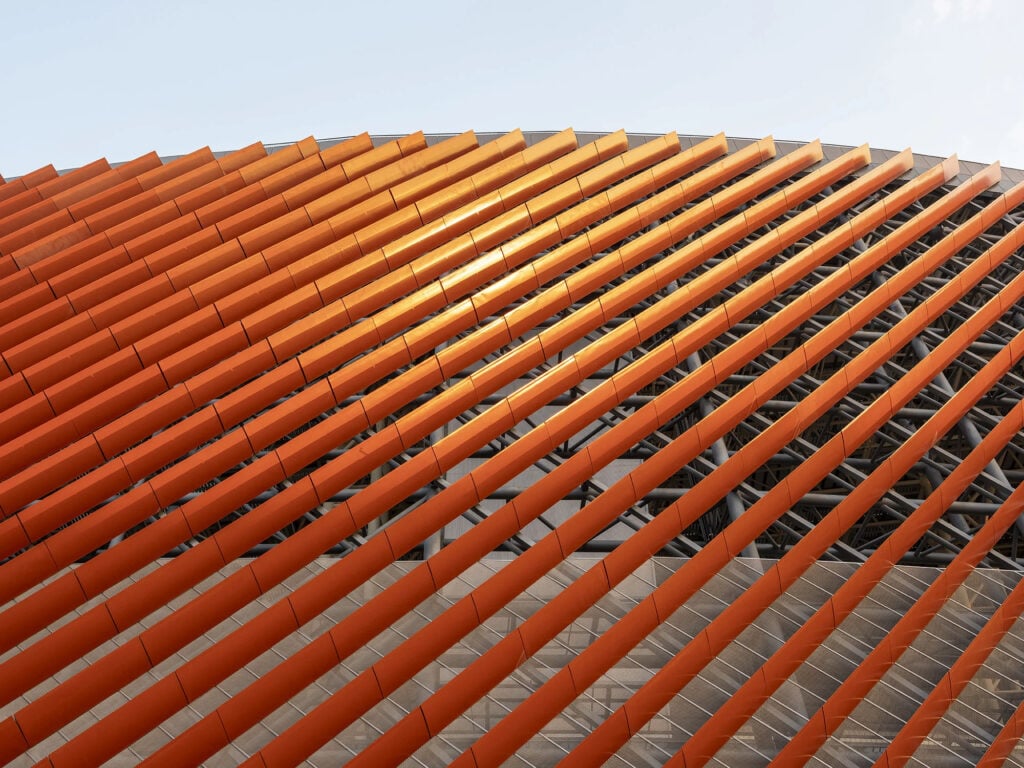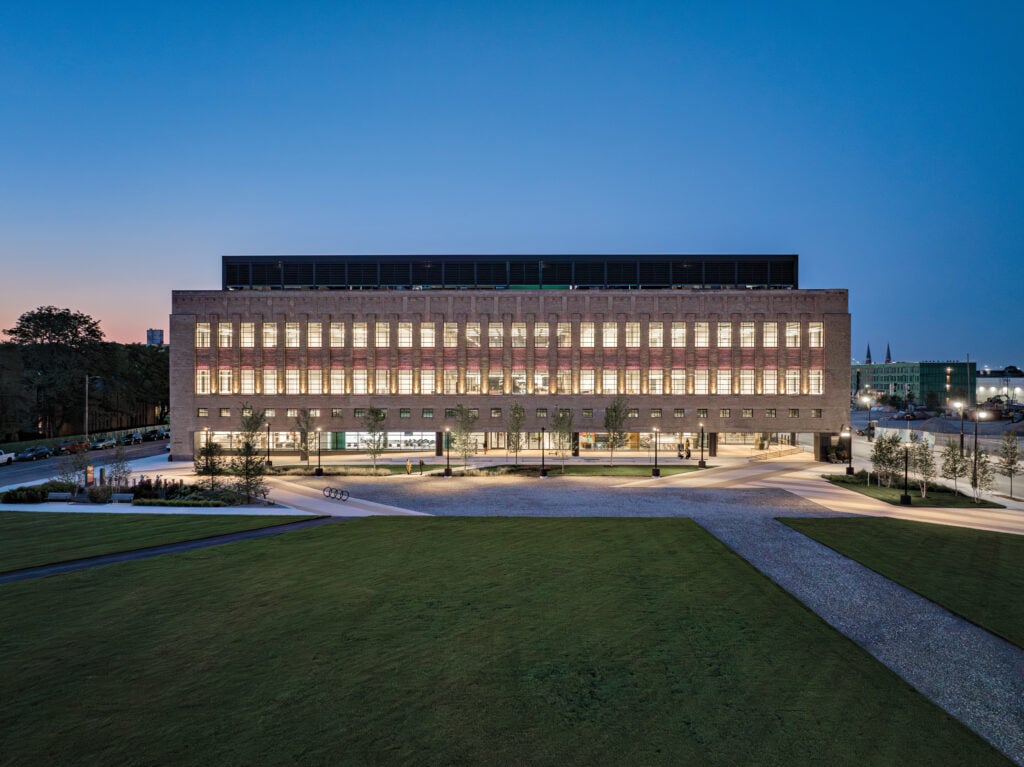
September 27, 2021
With Bees and Recycled Polypropylene, Vitra Takes Steps Toward Sustainability

The attention given to the planning and execution of the Oudolf garden, however, signals a significant change of course. While its planning dates to the pre-pandemic times, the garden was planted in May 2020, when most of the world came to a standstill. In total, 32,000 perennial plants of 114 species were planted in small pots. When the garden was unveiled to the public one year later, they had matured to give way to a dazzling early summer landscape, a complex mix of perennial varieties of varying colors and fragrances. The various colors and textures changed over the course of the following months, and in typical Oudolf fashion, the garden continues to evolve and transform with the seasons. Its maintenance will now become a constant; and the gardening team will be complemented by a few beehives at the edge of the garden, looked after by two company employees that double as trained apiculturists. We might be looking at a future when Vitra honey becomes a reality.
Elsewhere in the company, ideas of sustainability are taking hold in novel and interesting ways. While Vitra can trace back environmental concerns to 1986, when the first workgroup around this theme was set up, recent efforts show a more comprehensive pivot to sustainability at different scales. At the product level, this is exemplified by an effort to expand the percentage o recyclable and recycled materials. When it comes to plastic, a material that has featured prominently in the Vitra catalogue since the launch of the Panton chair, the company has committed to reevaluate its plastic use and promoting a more responsible use of the material.
Simultaneously, it has revisited two existing products that are now available in a recycled plastic version: the Toolbox RE and the Tip Ton RE. For a company preoccupied with the durability of its products, the making of the Toolbox RE and the Tip Ton RE posed its own share of challenges. It also brought about new ways of sourcing and engaging with plastic—all the plastic used in the recycled products was sourced from German household waste, which was collected, cleaned, and melted once again. The result are objects that combine fiberglass (for added stability) and polypropylene, in one single color—pale grey—which is faithful to the origin of the material. “There are tiny specks of other colors in the grey, which vary slightly from chair to chair,” says Christian Grosen, Vitra’s chief design officer, ”but for me that adds interest and pushes our perception of plastics”.

Sustainability principles are also influencing on the company operates, specifically in their concern with a longer life span for their products and what they call the “complete life cycle”. One interesting way in which this has materialized are the Vitra “Circle Stores”. Since 2017, the company has opened three circle stores, in Brussels, Frankfurt and Amsterdam, where used items from exhibitions, trade fairs and showroom presentations are sold and brought back into circulation. Additionally, the company is taking a closer look at its production and distribution ecosystem, working with suppliers and production facilities, which with the exception of one plant in Japan to serve the Asian market, are entirely in Europe, and revising thew way their products travel to their final consumer.
Detailed and complex, Vitra’s pivot to sustainability operates at various levels, from the daily realities of production to the experience of visiting the Vitra campus. While not unexpected in the current moment of planetary crisis, it is pragmatic and conceived to change the company from the inside out, using concrete steps. Now, like Oudolf’s garden, in order to thrive, it must be steered and maintained constantly. Here’s to hoping Vitra is indeed in it for the long run. I, for one, really want to to taste that honey.
Would you like to comment on this article? Send your thoughts to: [email protected]
Latest
Profiles
Zoha Tasneem Centers Empathy and Ecology
The Parsons MFA interior design graduate has created an “amphibian interior” that responds to rising sea levels and their impacts on coastal communities.
Viewpoints
How Can We Design Buildings to Heal, Not Harm?
Jason McLennan—regenerative design pioneer and chief sustainability officer at Perkins&Will—on creating buildings that restore, replenish, and revive the natural world.
Products
Behind the Fine Art and Science of Glazing
Architects today are thinking beyond the curtain wall, using glass to deliver high energy performance and better comfort in a variety of buildings.










